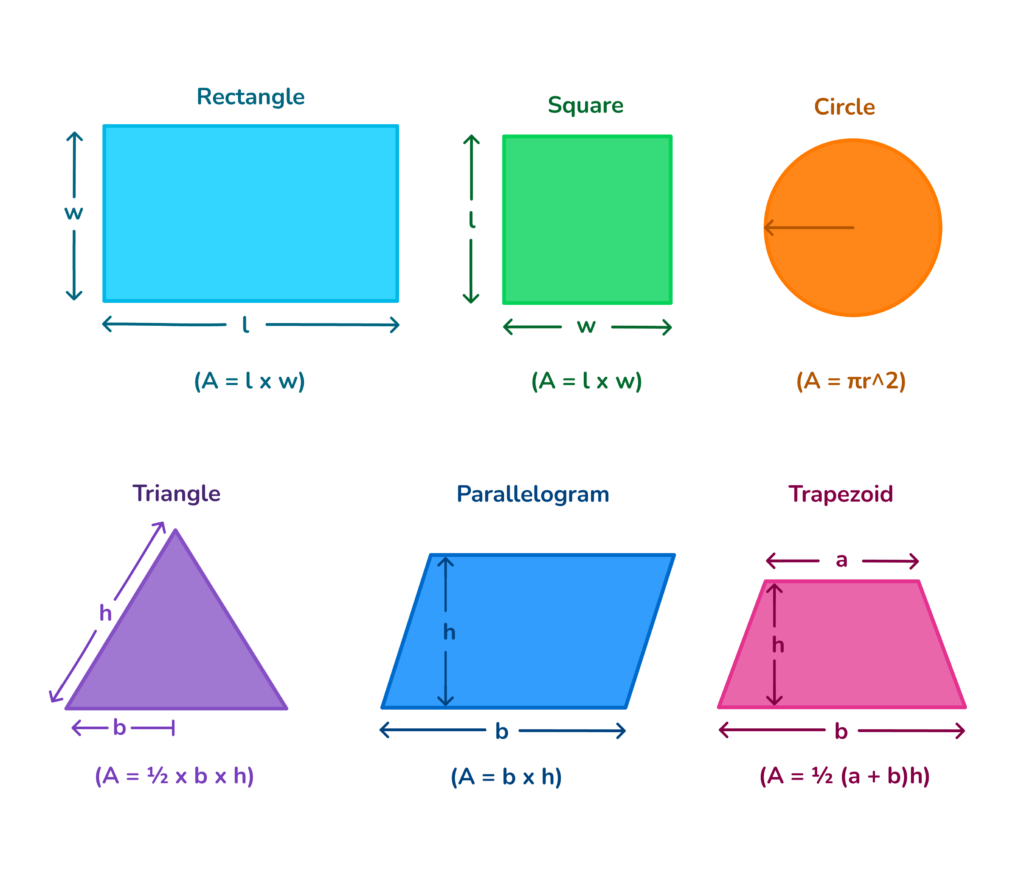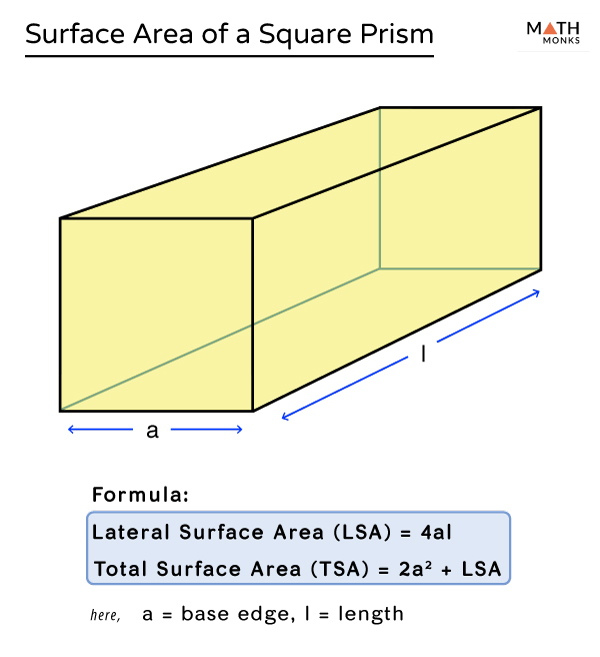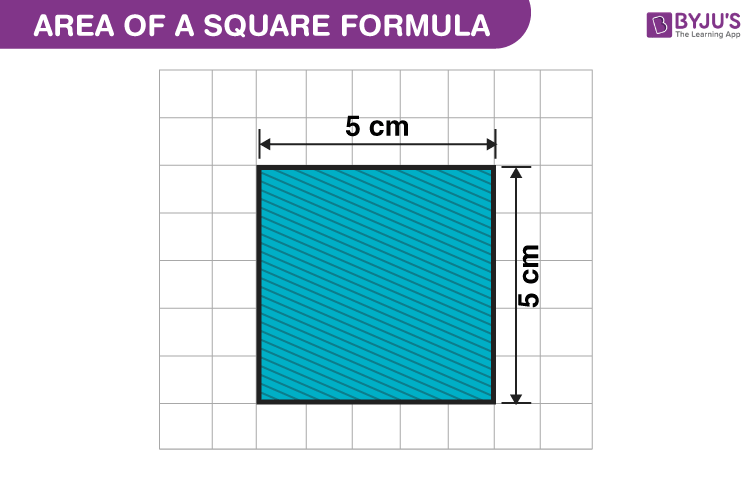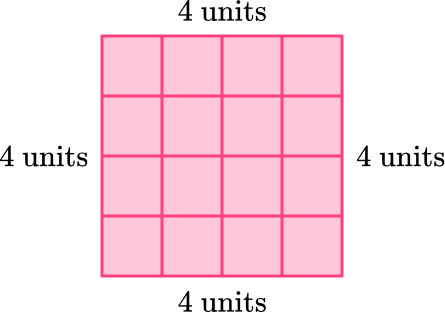Topic perimeter vs parameter: The terms "perimeter" and "parameter" are often confused due to their similar spellings, but they have distinct meanings. This article clarifies their differences, providing clear definitions, examples in various contexts, and tips to avoid confusion, helping readers accurately use these terms in both everyday and technical language.
Table of Content
Understanding the Difference Between Perimeter and Parameter
The terms "perimeter" and "parameter" are often confused due to their similar spellings and pronunciations. However, they have distinct meanings and applications, particularly in geometry, mathematics, and other scientific fields.
Definitions
- Perimeter: The total length of the boundary or edges of a two-dimensional geometric shape. It is measured by adding the lengths of all the sides of the shape.
- Parameter: A variable in a mathematical function or a factor that defines a system or sets the conditions of its operation. Parameters are used to determine the output of a function or the characteristics of a system.
Examples and Contexts
- Geometry: The perimeter of a rectangle is calculated by adding twice the length and twice the width (P = 2l + 2w). Parameters in geometry might refer to the dimensions like the radius or diameter of a circle.
- Mathematics: In the equation y = ax^2 + bx + c, the coefficients a, b, and c are parameters that define the specific form of the quadratic function.
- Programming: Parameters are values passed to a function to modify its behavior. For example, in a function definition, parameters act as placeholders for the actual values that will be provided during function calls.
- Statistics: Parameters such as mean or variance are used to characterize a statistical population and are estimated using sample data.
Common Mistakes
- Using perimeter instead of parameter in scientific contexts, leading to confusion. For example, incorrectly referring to the boundary of a study as its "perimeter" rather than the "parameters" defining its scope.
- Using parameter instead of perimeter in everyday language, making communication overly technical. For example, describing the boundary of a property as its "parameters" rather than its "perimeter."
Key Differences
| Aspect | Perimeter | Parameter |
|---|---|---|
| Definition | The total distance around a two-dimensional shape | A variable or factor that defines a system or function |
| Usage | Commonly used in geometry and physical boundaries | Used in mathematics, science, programming, and statistics |
| Measurement | Measured in units of length (e.g., meters, feet) | Can be numerical or categorical |
Tips to Avoid Confusion
- Understand the context: Determine whether you are discussing the boundary of a shape (perimeter) or a defining factor in a function or system (parameter).
- Consult references: Use dictionaries or technical resources to confirm the correct term when in doubt.
- Practice: Familiarize yourself with examples and exercises to reinforce the correct usage of each term.
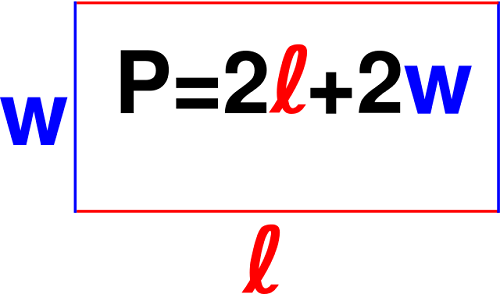
Introduction
Understanding the difference between "perimeter" and "parameter" is crucial for effective communication, especially in technical fields. Although these terms sound similar, they have distinct meanings and applications. This section explores the definitions, contexts, and common usage errors associated with "perimeter" and "parameter."
- Perimeter: Refers to the boundary or the distance around a two-dimensional shape. It is commonly used in geometry to describe the total length of the sides of a polygon. For example, the perimeter of a rectangle is calculated by summing twice the length and twice the width.
- Parameter: Represents a variable that defines a system or sets the conditions of its operation. In mathematics and science, parameters are used to describe specific characteristics of functions or processes. For instance, in an equation, parameters are the constants that define the function's behavior.
Confusion often arises because both terms relate to the idea of boundaries or limits, but they apply in different contexts. In this article, we will delve into these differences in more detail, providing clear examples and practical applications to help you use these terms correctly.
Definition of Perimeter
The term perimeter refers to the distance around a two-dimensional geometric shape. It is the total length of the boundary of any closed figure, such as a square, rectangle, or circle. The perimeter is an important measurement in geometry and is used in various real-world applications, including construction, land measurement, and more.
In mathematical terms, the perimeter (P) of common shapes can be calculated using specific formulas:
- For a rectangle: \( P = 2(l + w) \), where \( l \) is the length and \( w \) is the width.
- For a square: \( P = 4s \), where \( s \) is the length of one side.
- For a triangle: \( P = a + b + c \), where \( a \), \( b \), and \( c \) are the lengths of the sides.
- For a circle (circumference): \( C = 2\pi r \), where \( r \) is the radius.
Understanding the concept of perimeter helps in solving problems related to the boundary length of different shapes and is essential in fields like architecture, engineering, and various scientific disciplines.
Definition of Parameter
The term "parameter" has several meanings across different fields, but generally, it refers to a quantity that helps to define a particular system, process, or set of conditions. In mathematics and science, a parameter is a variable that is constant within a specific context but can change in other situations. Parameters are crucial in determining the behavior and characteristics of mathematical functions, scientific experiments, and statistical models.
In geometry, a parameter might refer to a constant in the equation of a curve that can vary to produce a family of similar curves. For example, in the case of conic sections like ellipses and hyperbolas, parameters can define specific properties of these shapes.
Parameters are also commonly used in computer programming. In this context, a parameter is an input to a function or procedure, where its value is supplied when the function is called. This allows the function to perform operations based on different inputs, enhancing its flexibility and reusability.
In practical terms, parameters are used to set boundaries, guidelines, or criteria for processes and activities. For example, in research, parameters may include factors such as age, weight, and other variables that influence the study's outcomes.
To summarize, parameters are versatile and essential components in various fields, providing a way to quantify, measure, and control different aspects of systems and processes.
Common Mistakes and Differences
The terms "perimeter" and "parameter" are often confused due to their similar pronunciations, but they have distinct meanings and applications. Understanding their differences is crucial for precise communication, especially in scientific, mathematical, and everyday contexts.
- Definition:
- Perimeter: The total length of the boundary of a two-dimensional geometric shape. For example, the perimeter of a rectangle is calculated as \(2 \times ( \text{length} + \text{width} )\).
- Parameter: A variable or constant in mathematics and science that defines a system or sets the conditions of an operation. Parameters can be factors that limit or define the performance of a system.
- Common Mistakes:
- Using "parameter" when "perimeter" is intended, often to sound more technical or sophisticated.
- Confusing the terms in contexts where precise definitions are necessary, such as in technical writing or scientific research.
- Usage Examples:
- Correct: "The perimeter of the playground is 200 meters."
- Incorrect: "The parameter of the playground is 200 meters." (Should be "perimeter")
- Correct: "The experiment's parameters were carefully controlled."
- Incorrect: "The experiment's perimeter was carefully controlled." (Should be "parameters")
- Field-Specific Differences:
- Mathematics: Perimeter refers to the length around a shape, while a parameter is a constant in an equation or a defining factor in a model.
- Science: Parameters are used to set conditions for experiments, while perimeter might describe the boundary of a physical area under study.
- Everyday Use: Perimeter is commonly used to describe the edges of physical spaces, whereas parameter is used more abstractly to describe limits or defining factors.
Understanding the correct usage of "perimeter" and "parameter" enhances clarity in both written and spoken communication, reducing misunderstandings in various professional and academic fields.

Examples in Various Contexts
Understanding the differences between perimeter and parameter can be clarified by looking at examples in various contexts. Below are some practical applications and examples:
- Geometry:
The term "perimeter" is used to describe the total length around a two-dimensional shape. For example, the perimeter of a rectangle is calculated as \( P = 2l + 2w \), where \( l \) is the length and \( w \) is the width. On the other hand, "parameter" in geometry might refer to a defining property of a shape, such as the radius of a circle or the side length of a square.
- Programming:
In programming, a "parameter" is a variable used to pass information between functions or procedures. For example, in the function
void setAge(int age), the variableageis a parameter. "Perimeter" is not typically used in programming contexts. - Statistics:
In statistics, a "parameter" is a value that characterizes a population, such as the mean or variance. It is often contrasted with a statistic, which is a value derived from a sample. The term "perimeter" does not have a statistical application.
- Real Estate:
The "perimeter" refers to the boundary of a property. For instance, a perimeter fence surrounds the property, marking its outer limits. In contrast, "parameter" might be used in a business plan to describe variables that affect the market value of real estate, such as location or square footage.
- Physics:
In physics, a "parameter" might describe a measurable factor that defines a system's behavior, such as temperature or pressure. "Perimeter" might be used to describe the boundary length of a physical object or space.
- Everyday Life:
In daily conversations, "perimeter" is often used to describe the outer edge of an area, such as the perimeter of a garden. "Parameter" is less commonly used in everyday language but may appear in discussions involving specific limits or conditions, such as the parameters of a job role.
Geometry Context
In geometry, the terms "perimeter" and "parameter" are often confused due to their similar spelling and pronunciation. However, they have distinct meanings and uses in mathematical contexts.
Perimeter
The perimeter is the total length of the boundary of a two-dimensional shape. It is a linear measurement and can be calculated by summing the lengths of all sides of the shape.
For different geometric shapes, the perimeter formulas vary:
- Square: \( P = 4a \) where \( a \) is the length of a side.
- Rectangle: \( P = 2(l + w) \) where \( l \) is the length and \( w \) is the width.
- Circle: \( P = 2\pi r \) where \( r \) is the radius (perimeter is also referred to as the circumference in this case).
- Triangle: \( P = a + b + c \) where \( a \), \( b \), and \( c \) are the lengths of the sides.
Parameter
In geometry, a parameter is a variable that is used to define a particular system or set of conditions. Parameters can describe properties of geometric figures or mathematical functions but do not directly measure lengths or distances.
For example:
- In the equation of a circle \((x - h)^2 + (y - k)^2 = r^2\), the parameters are \( h \), \( k \), and \( r \), where \((h, k)\) is the center and \( r \) is the radius.
- In a parametric equation of a line \( x = x_0 + at \) and \( y = y_0 + bt \), the parameters are \( x_0 \), \( y_0 \), \( a \), and \( b \), with \( t \) being the parameter that varies.
Comparison in Geometry
To clarify the differences between perimeter and parameter in a geometric context:
| Aspect | Perimeter | Parameter |
|---|---|---|
| Definition | The total length around a two-dimensional shape. | A variable defining a system or property of a geometric figure. |
| Measurement | Measured in units of length (e.g., meters, centimeters). | Usually dimensionless but can be associated with units depending on the context (e.g., radius in meters). |
| Examples | Square, rectangle, circle, triangle. | Radius, center coordinates, coefficients in equations. |
Practical Examples
- Calculating the perimeter of a garden to determine the length of the fence required.
- Using parameters to describe the position and size of a circle in a coordinate plane.
Programming Context
In programming, the term parameter is widely used and refers to a variable used in a function or subroutine to refer to one of the pieces of data provided as input to the function. This concept is crucial for creating reusable and modular code. Parameters enable functions to operate on different data without modifying the function's definition.
Consider the following points when understanding parameters in programming:
- Function Definition: Parameters are specified in the function definition. They act as placeholders for the values that will be passed to the function.
- Arguments: When a function is called, the actual values passed to the function are known as arguments. These arguments replace the parameters in the function definition.
- Parameter List: A function can have multiple parameters, separated by commas. The order of parameters in the function definition must match the order of arguments provided during the function call.
Here is an example in Python:
def add(a, b):
return a + b
result = add(3, 5)
print(result) # Output: 8
In this example, a and b are parameters, while 3 and 5 are arguments passed to the function add.
Types of Parameters: There are several types of parameters used in programming:
- Positional Parameters: Parameters that must be provided in the same order as defined in the function.
- Keyword Parameters: Parameters passed by explicitly specifying the parameter name, allowing out-of-order assignment.
- Default Parameters: Parameters that have a default value specified, which are used if no argument is provided during the function call.
- Variable-Length Parameters: Functions that can accept a variable number of arguments using
*argsand**kwargsin Python.
Here's an example illustrating different types of parameters in Python:
def example_func(pos1, pos2, key1=None, *args, **kwargs):
print(f"positional: {pos1}, {pos2}")
print(f"keyword: {key1}")
print(f"variable-length args: {args}")
print(f"keyword args: {kwargs}")
example_func(1, 2, key1="value", 3, 4, key2="another value", key3="yet another value")
This function demonstrates positional parameters pos1 and pos2, a keyword parameter key1, and variable-length parameters *args and **kwargs.
Importance of Parameters: Proper use of parameters improves code clarity, reusability, and maintainability. It allows functions to be flexible and adaptable to different inputs without rewriting the function logic.
Statistics Context
In statistics, the terms parameter and statistic are frequently used, but they refer to different concepts and are often confused. Understanding these differences is crucial for accurate data analysis and interpretation.
A parameter is a value that describes a characteristic of an entire population. It is a fixed, often unknown value because it's impractical or impossible to measure every member of the population. Common parameters include:
- Population mean (\( \mu \))
- Population standard deviation (\( \sigma \))
- Population proportion (\( P \))
- Correlation coefficient (\( \rho \))
A statistic is a value that describes a characteristic of a sample, which is a subset of the population. It is used to estimate the parameter. Common statistics include:
- Sample mean (\( \bar{x} \))
- Sample standard deviation (\( s \))
- Sample proportion (\( p \))
- Sample correlation coefficient (\( r \))
For instance, if you wanted to know the average height of all palm trees in Florida, the true average height is the population mean (\( \mu \)), which is a parameter. Because it's impractical to measure every tree, you take a sample and calculate the sample mean (\( \bar{x} \)), which is a statistic.
| Measurement | Parameter Notation | Statistic Notation |
|---|---|---|
| Mean | \( \mu \) | \( \bar{x} \) |
| Standard Deviation | \( \sigma \) | \( s \) |
| Variance | \( \sigma^2 \) | \( s^2 \) |
| Proportion | \( P \) | \( p \) |
| Correlation Coefficient | \( \rho \) | \( r \) |
In statistical inference, we use sample statistics to draw conclusions about population parameters. For example, if a poll states that "62% of Americans are pessimistic about the future economy," this is based on a sample proportion (\( p \)), not the true population proportion (\( P \)). Properly, the report should say "62% of a random sample of Americans were pessimistic about the future economy," emphasizing the inference drawn from the sample statistic.
Understanding the difference between parameters and statistics helps in the correct interpretation of data and the reliability of conclusions drawn from sample data.
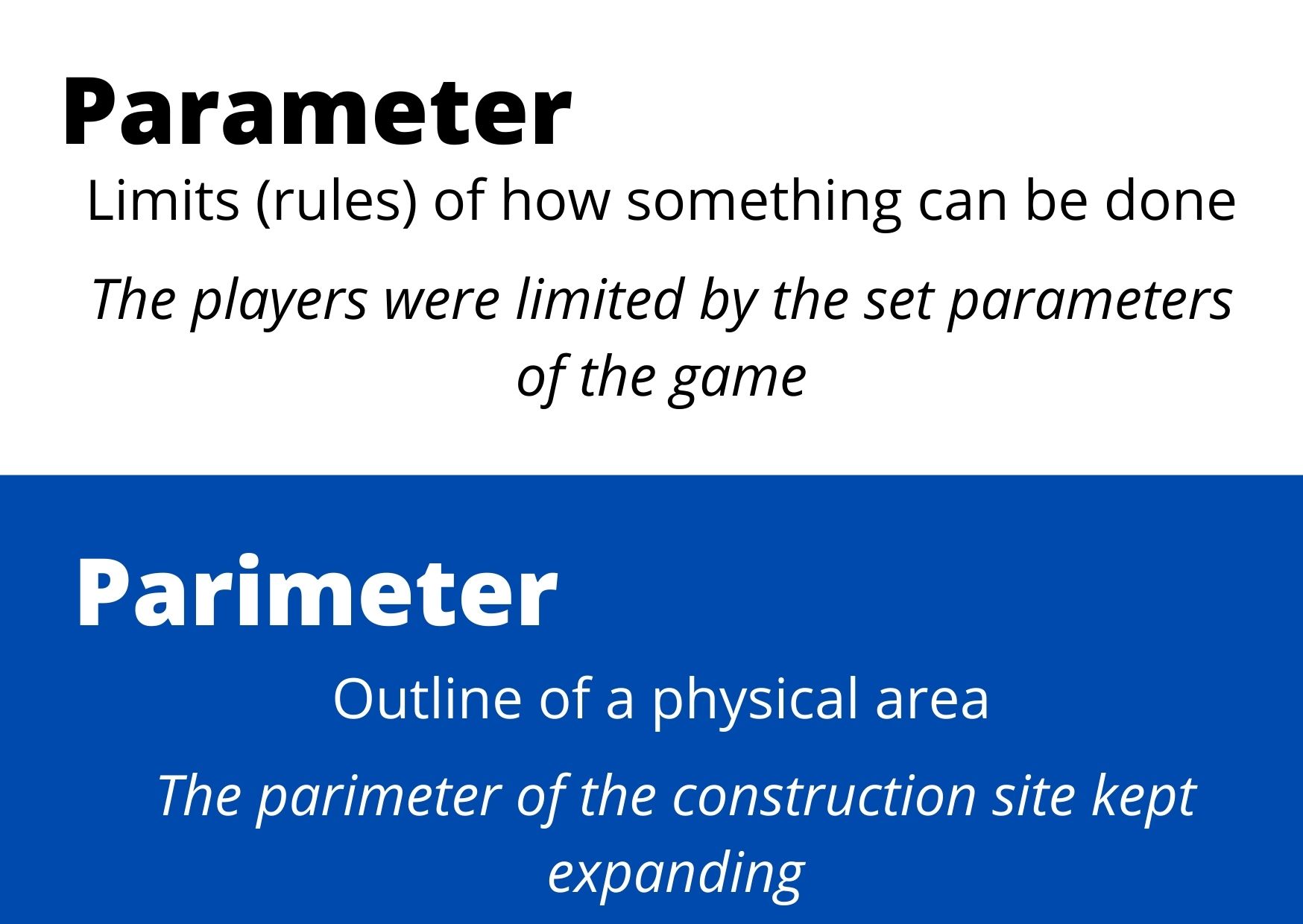
Conclusion
Understanding the differences between "perimeter" and "parameter" is essential for clear and accurate communication in various fields such as geometry, programming, and statistics. While "perimeter" refers to the boundary length of a shape in geometry, "parameter" has a broader meaning, encompassing the defining characteristics of a system, model, or function across different disciplines.
- Geometry: The perimeter is the total length around a two-dimensional shape, crucial for calculating boundaries and fencing areas.
- Programming: Parameters are inputs to functions or procedures that determine how the function operates or behaves.
- Statistics: Parameters are values that summarize or describe aspects of a population, such as mean or variance.
By differentiating between these terms, we can avoid confusion and enhance our understanding of various concepts in both academic and professional contexts. Remembering their distinct applications and contexts will help ensure precise communication and effective problem-solving.
Overall, mastering the use of "perimeter" and "parameter" not only aids in specific fields but also enhances general analytical and descriptive skills, contributing to clearer and more effective communication.
Math Antics - Perimeter
Statistic vs Parameter & Population vs Sample
Area vs. Perimeter | MightyOwl Math | 3rd Grade
Perimeter for Kids | Math Lesson Video
Difference Between Perimeter and Area
Finding the Perimeter
READ MORE:

